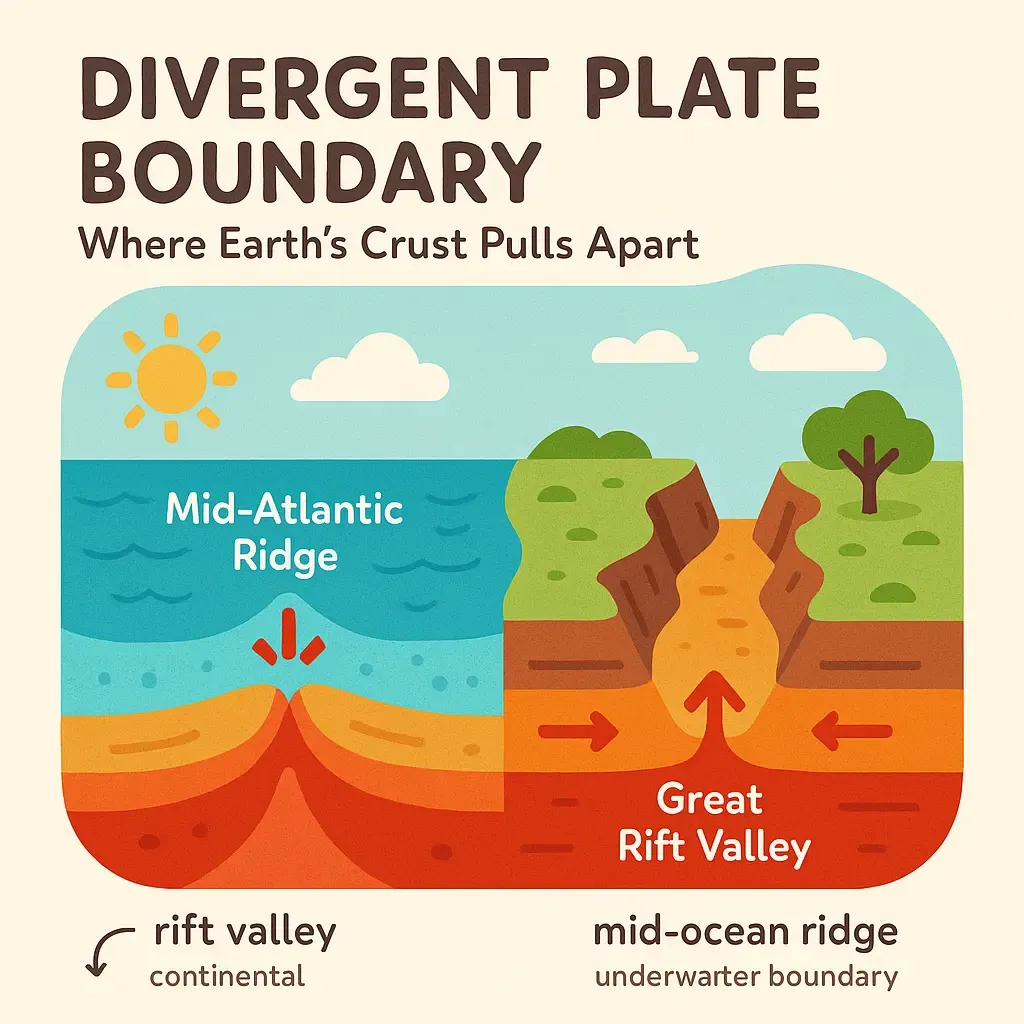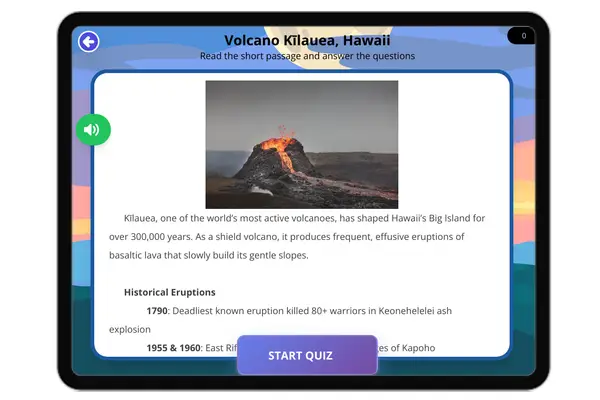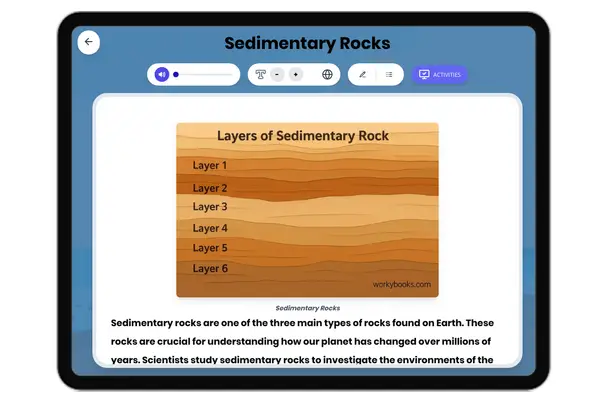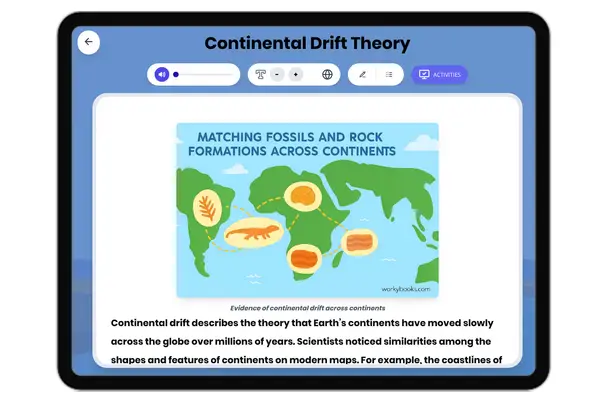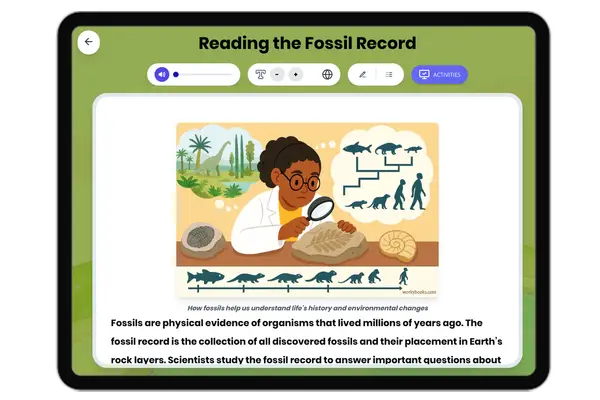Divergent Plate Boundary: Where Earth's Crust Pulls Apart — Reading Comprehension
Premium Resource
Grades
- 5
- 6
- 7
- 8
Standards
- MS-ESS2-3
- RI.6.1
- RI.7.4
- RI.8.2
PRINT+DIGITAL RESOURCE
This learning resource is available in interactive and printable formats. The interactive worksheet can be played online and assigned to students. The Printable PDF version can be downloaded and printed for completion by hand.
About This Reader
This science passage explains how divergent plate boundaries form where Earth's crust pulls apart, creating features like mid-ocean ridges (e.g., Mid-Atlantic Ridge) and continental rift valleys (e.g., East Africa's Great Rift Valley). The text details key evidence of plate movement including pillow basalts, magnetic striping in oceanic crust, and the widening Atlantic Ocean (2.5 cm/year). Aligned with NGSS MS-ESS2-3, it demonstrates how scientists use rock ages and fossil distributions (like Mesosaurus) to reconstruct ancient plate motions. The passage highlights Iceland's unique position astride the Mid-Atlantic Ridge, where visitors can stand between the North American and Eurasian plates. Key concepts include crustal extension, magma upwelling, and the formation of new oceanic crust. Ideal for middle school Earth science units on plate tectonics, it supports reading informational text standards for analyzing scientific evidence and data visualization (magnetic reversal patterns).
Perfect For:
👩🏫 Teachers
- • Reading comprehension practice
- • Auto-graded assessments
- • Literacy skill development
👨👩👧👦 Parents
- • Reading practice at home
- • Comprehension improvement
- • Educational reading time
🏠 Homeschoolers
- • Reading curriculum support
- • Independent reading practice
- • Progress monitoring
Reading Features:
📖
Reading Passage
Engaging fiction or nonfiction text
❓
Comprehension Quiz
Auto-graded questions
📊
Instant Feedback
Immediate results and scoring
📄
Printable Version
Download for offline reading
🔊
Read Aloud
Voice-over with word highlighting



